TESS
Latest

NASA's TESS spacecraft has already found 2,200 possible planets
NASA's TESS spacecraft has already found 2,200 potential planets, surpassing its original goal and raising hope of finding Earth-like worlds.

Astronomers find the first known exposed core of a gas giant
Scientists have discovered what's believed to be the first known exposed core of a gas giant.

NASA's TESS spacecraft discovers its smallest exoplanet to date
NASA's TESS spacecraft is continuing to find ever-smaller planets -- and that now includes planets smaller than the human homeworld. The vessel has found a planet in the L 98-59 system, L 98-59b, that's 80 percent the size of Earth -- and 10 percent smaller than TESS' previous tiniest finding. You won't be planning a vacation any time soon, unfortunately. The system is 34.6 light-years away, and all of the planets discovered so far (there are larger 59c and 59d planets) sit in the "Venus zone" where a runaway greenhouse gas effect could render them uninhabitable.
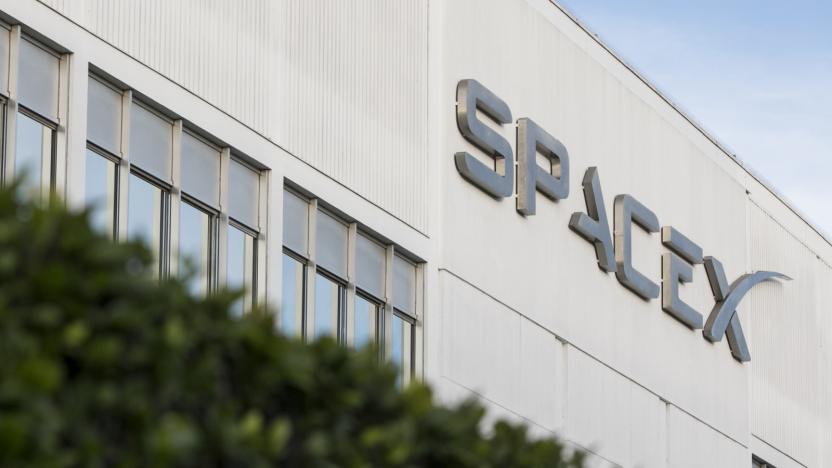
An engineer allegedly falsified inspection reports for SpaceX rockets
Federal investigators believe a quality assurance engineer responsible for inspecting parts for SpaceX had been falsifying reports. The engineer works for New York-based PMI Industries and is accused of forging signatures on at least 38 inspection reports for parts intended for use in SpaceX's Falcon 9 and Falcon Heavy rockets. Authorities also found at least 76 parts that were rejected or not inspected but shipped to SpaceX anyway.
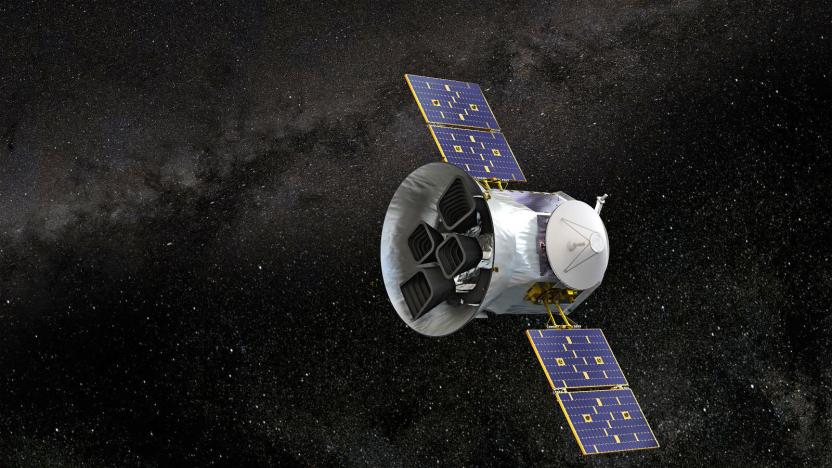
NASA’s TESS spacecraft finds its first Earth-sized exoplanet
One year after its launch, NASA's TESS (Transiting Exoplanet Survey Satellite) discovered its first Earth-sized exoplanet. Named HD21749c, the planet orbits a star just 53 light-years from Earth and is likely rocky but uninhabitable. The findings -- published in Astrophysical Journal Letters -- suggest TESS is capable of fulfilling its mission to catalog thousands of planet candidates, including more than 300 that are expected to be Earth-sized and super-Earth-sized exoplanets.

Researchers propose guiding large space telescopes with tiny satellites
Using the recently retired Kepler space telescope, scientists have confirmed thousands of exoplanets, and as its successor TESS ramps up its search, we're poised to discover plenty more. But once we find exoplanets, learning more detailed information about them requires larger, more powerful space telescopes. These telescopes would need very large mirrors, much like NASA's upcoming (and continuously delayed) James Webb Telescope, which will use its 6.5-meter-wide mirror to observe extremely distant galaxies. And like the James Webb Telescope, they very well could have a mirror made up of many individual segments -- Webb's has 18.
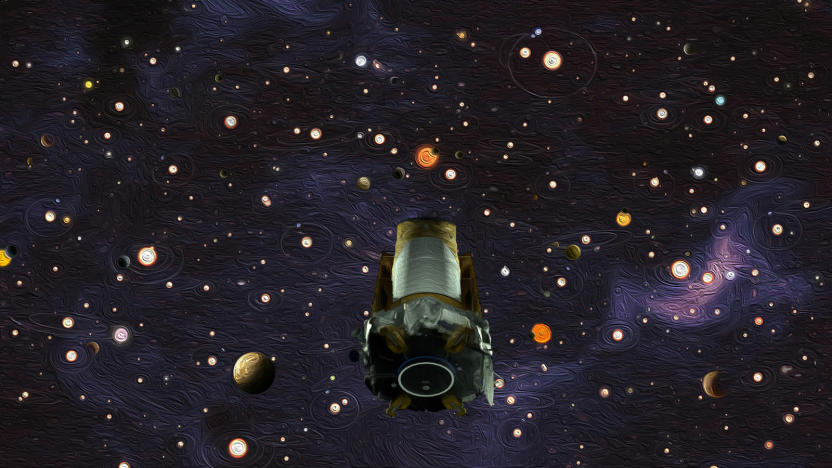
The Kepler space telescope's end has finally come
The time has finally come to say goodbye to Kepler, the spacecraft that exceeded expectations throughout its mission and has so far confirmed more than 2,600 planets outside of our solar system. In March, NASA warned that Kepler's end might be nearing as it was running very low on fuel, and scientists running the spacecraft have put it to sleep multiple times over the past few months in order to preserve what fuel it had left. But even as recently as last month, Kepler demonstrated that it still had enough juice to continue collecting data and launched into its 19th observation campaign. However, Kepler has now run out of fuel and NASA has retired the spacecraft after nine years of observations.
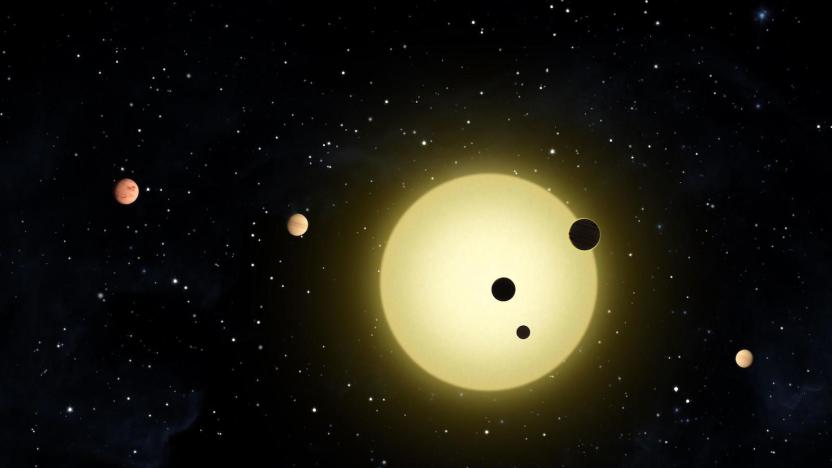
NASA put Kepler back to sleep in hopes it will send data again
Kepler has been running low on fuel for some time, so much so that NASA even put the spacecraft into a sleep mode in July in order to make sure it had enough fuel to transmit data back to Earth. But the planet-hunter has kept chugging -- it even kicked off a new data collection campaign in August. However, Kepler has run into another snag, and NASA has decided to put it back to sleep for the time being.
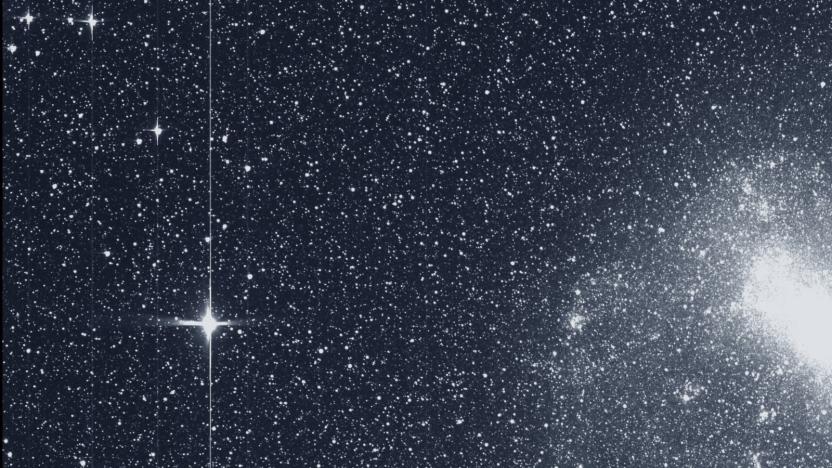
NASA's planet-hunting TESS spacecraft captures 'first light' image
Back in May, one of the cameras on NASA's Transiting Exoplanet Survey Satellite (TESS) snapped a two-second test exposure to make sure that it works. It was but a taste of what we can expect from Kepler's successor, though, and now we finally know what its cameras are capable of. The planet-hunting spacecraft's four cameras have taken their "first light" image -- the first astronomical photo after a telescope has been assembled -- showing the satellite's full field of view.

NASA’s TESS spacecraft begins its search for exoplanets
NASA's TESS spacecraft is officially up and running. The agency recently announced that TESS, which stands for Transiting Exoplanet Survey Satellite, started its search for exoplanets -- planets outside of our solar system -- on July 25th. Its first data transmission is scheduled for August. "I'm thrilled that our new planet hunter mission is ready to start scouring our solar system's neighborhood for new worlds," Paul Hertz, director of the Astrophysics Division of NASA's Science Mission Directorate, said in a statement. "Now that we know there are more planets than stars in our universe, I look forward to the strange, fantastic worlds we're bound to discover."
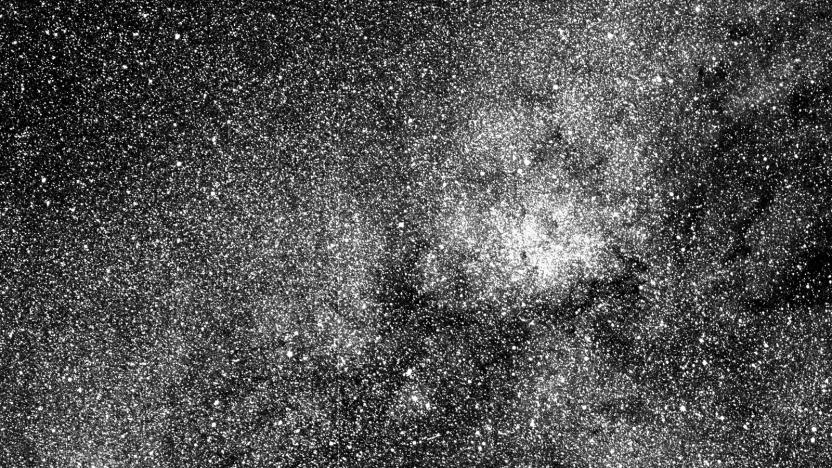
NASA's planet-hunting TESS spacecraft snaps its first photo
TESS, NASA's new exoplanet-hunting spacecraft, has captured its first image ever, giving us a glimpse of what its powerful "eyes" can see. The spacecraft's science team used one of its four cameras to snap a two-second test exposure as part of their preparations now that TESS is only a month away from officially starting its science operations. Their photo shows over 200,000 stars with the southern constellation Centaurus at the center and one of the brightest stars in the night sky, the Beta Centauri, visible on the lower left edge (see the full image below the fold).
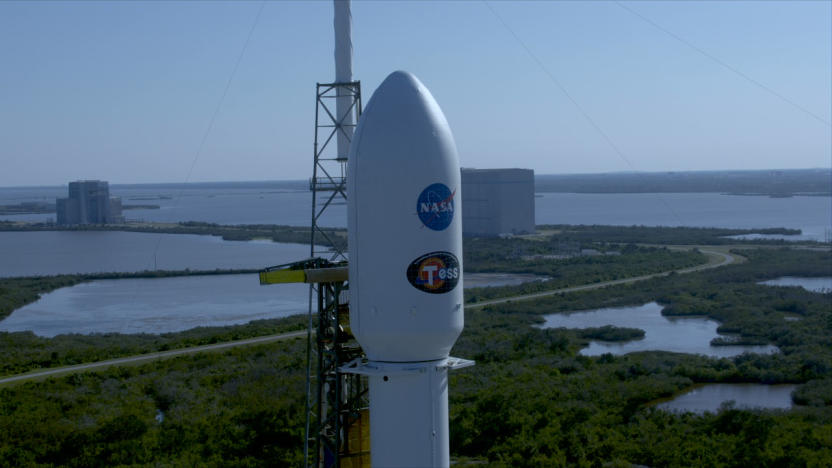
SpaceX launches NASA's planet-finding spacecraft TESS
NASA's new planet-hunting Kepler successor TESS is on its way to orbit. SpaceX has successfully launched the spacecraft after scrubbing its first attempt on Monday to review and analyze its guidance, navigation and control systems. The Falcon 9 rocket carrying TESS took off from Space Launch Complex 40 at Cape Canaveral, and its first stage will attempt to land on the "Of Course I Still Love You" barge in the Atlantic Ocean after its done with its job.

NASA's TESS spacecraft may find 1,600 new planets in the next two years
On Monday evening, NASA plans to launch a brand new satellite into orbit, courtesy of a SpaceX Falcon 9 rocket. Called TESS (the Transiting Exoplanet Survey Satellite), the spacecraft is designed to detect planets outside our solar system (called exoplanets) that are relatively close to our solar neighborhood.

NASA's planet-hunting spacecraft Kepler is near the end of its life
NASA's Kepler spacecraft has been in orbit of the Earth for nine years. In that time, it's well exceeded its original 3.5-year mission and has pinpointed over 4,500 exoplanets and candidates. It's a little bit heartbreaking (though not unexpected), then, that NASA revealed that the spacecraft is on its last legs. Kepler will run out of fuel in the next few months and will soon be dead in space.
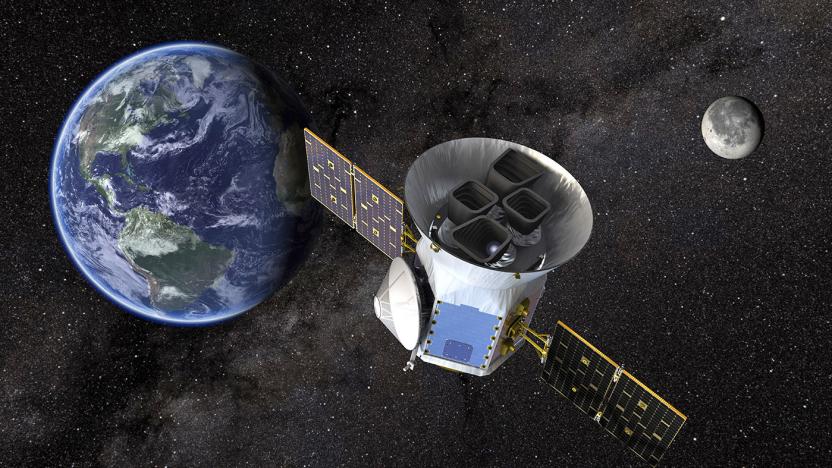
NASA's new satellite will look for Earth-sized planets nearby
The Kepler mission scopes out stars and galaxies thousands of light-years away to find exoplanets. NASA's upcoming planet hunter, however, will keep an eye on solar systems closer to home. The Transiting Exoplanet Survey Satellite or TESS will find planets by observing stars and looking out for shadows cast by transiting planets. It will be programmed to compute for a planet's size and the time it takes to orbit its star, because those are the information astronomers need to determine if it's habitable. Since Earth- and even super-Earth-sized planets are tiny, though, TESS will observe small bright dwarf stars only hundreds of light-years away.

NASA gives planet-hunting TESS space telescope go-ahead for 2017 launch
NASA's Kepler space telescope hasn't exactly been a slouch when it comes to planet hunting, but that effort will soon be getting a considerable boost courtesy of a new mission selected by NASA as part of its Explorer program. Dubbed the Transiting Exoplanet Survey Satellite (or TESS), this new space telescope will one-up Kepler with the ability to perform an all-sky survey (an area 400 times larger than previous missions) to search for transiting exoplanets, with an eye towards planets comparable to Earth in size. TESS was developed by an MIT-led team, and will be placed in what they describe as a new "Goldilocks" orbit, allowing it to travel close enough to the Earth every two weeks for a high-speed data downlink while still remaining safely beyond the harmful radiation belts. It's now set for launch in 2017, when it will be joined by the Neutron Star Interior Composition Explorer (NICER), an addition to the International Space Station also selected as part of the Explorer program last week that will use a process called X-ray timing to study neutron stars.

Wii trademark surfaces, naysayers wiip
Remember last Thursday when some disappointed Wii (née Revolution) fanboys got to thinking, "Hey! There's no trademark on file! It's got to be a publicity stunt! Viva la Revolution!"?Of course, we tried to set them straight, but the conspiracy theory persisted -- as conspiracy theories are wont to do -- and now, with the help of the United States Patent and Trademark Office, we can see that Nintendo has indeed registered the name "Wii" with no fewer than nine applications!The trademark applications were filed on April 27 (the day the name was publicly announced), but have a "priority date" of November 11, 2005, meaning they had decided on the new name as far back as November of last year and delayed the trademark registration, lest the proverbial cat be let out of the proverbial bag.The trademarks cover the use of the name Wii in applications ranging from "printed matter" like iron-on transfers or, who knows, console packaging to "clothing" like wrist-bands or, perhaps maybe, t-shirts. They also cover "watches containing a game function", "providing temporary use of non-downloadable video game programs provided via the Internet", and about a thousand other things, meaning there's a wealth of info to be misinterpreted here by the fan community. You'd better put your tinfoil hats back on...let the crazy theories commence






